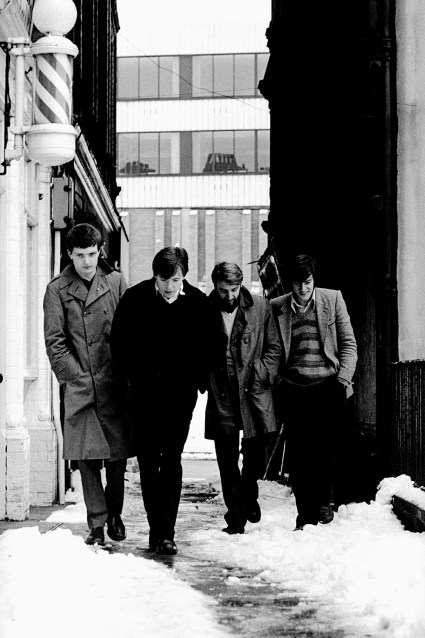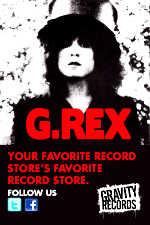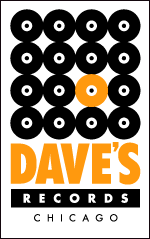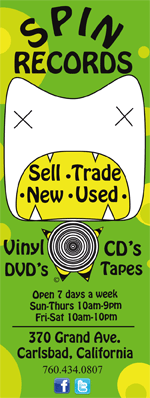
Remembering Ian Curtis, born on this day in 1956. —Ed.
As the gritty 1970s turned into the gaudy 1980s, three friends on the brink of their twenties in Ruislip, a London suburb, Dave, Ken, and Mark, were consumed by music. Home to ancient parishes, Ruislip’s steel-laden sky dims the life beneath it. Dulling the atmosphere even further was Prime Minister Margaret Thatcher, otherwise known as the “Iron Lady.” Clamping down upon workers’ unions, civil unrest, and racial tensions, the class divide soared and not much since has changed. Existence is an intermix of negative and positive tensions and the most compelling music is a mirror of these forces. Joy Division’s Unknown Pleasures is its ultimate reflection.
 Unknown Pleasures was released on June 15, 1979. Shoulder-to-shoulder with Siouxsie and the Banshees, Joy Division are considered to be pioneers of post-punk and their music was unlike anything heard at that time. The album is a marriage of two genius individuals—lead singer Ian Curtis, author of inwardly perceptive and melancholy lyrics, and studio maven Martin Hannett behind the production console.
Unknown Pleasures was released on June 15, 1979. Shoulder-to-shoulder with Siouxsie and the Banshees, Joy Division are considered to be pioneers of post-punk and their music was unlike anything heard at that time. The album is a marriage of two genius individuals—lead singer Ian Curtis, author of inwardly perceptive and melancholy lyrics, and studio maven Martin Hannett behind the production console.
As drummer Stephen Morris said in a recent livestream, “Headstock Festival Presents: Moving Through Silence,” a tribute at the 40th anniversary of Ian Curtis’ death, “He’d have notebooks full of words. We’d just start playing the riff and he’d go into his MacFisheries bag and pull out a piece of paper and just start singing. At the time, everyone was starting a band, but he loved writing and poetry. He was into T.S. Eliot, and Burroughs, he was very very literate, and very creative. I met his English teacher, he’d sent me a nice email saying how much he thought Ian was very talented, even at school as a writer. If he hadn’t done music, he would have written fiction.”
With a background in chemistry, Hannett understood science but was fascinated by sound. Unknown Pleasures was his great experiment with the latest technology—the first AMS Digital Delay Machine. His control was legendary, drummer Stephen Morris made to play every drum separately on some tracks—an insane process that created the atmospheric space the album is known for. By isolating each member in the studio and also mixing the album himself, Hannett was able to craft Joy Division’s sound and style—the subsequent output a masterpiece that is just as avant-garde now as it was then.
While researching for this article, a Reddit thread entitled, “How many of you have had the privilege to attend a Joy Division performance once and what were your experiences?” popped up in my inbox. Given the suicide of Curtis on the eve of their 1980 American tour, there are very few people who would have had this privilege. Yet, back in Ruislip in the 1970s, Dave, Mark, and Ken slipped into the underground punk scene catching some of the era’s most iconic bands. So what exactly was it like to bear witness to a band whose influence has touched artists such as Trent Reznor, Moby, Interpol, and U2?
Dave by far had the best response. Dave, now 62, saw the Sex Pistols, The Clash, and Joy Division all in a three-year span and thought that “exceptional bands would be a regular thing,” but original content is hard to come by. In Dave’s Reddit response he wrote, “[My] first impression was bad, they looked like bank filing clerks attending a boring retirement party. It was the tail end of punk rock and everything had been anti-fashion but they looked dull as fuck. When they began playing tho you knew this was on a different level.”

Dave offered to put me in touch with his mates Ken and Mark. Ken whose first show ever was Pink Floyd, told me on a quarantine What’s App call that he saw Joy Division seven times between 1979-1980. “30-plus-years ago, I knew I was in the presence of a great talent, listening to this band. Unknown Pleasures is the greatest rock debut album ever. And they were the greatest live band I have seen—or will ever see. There was no bullshit with them.”
Ken, seizing the zeitgeist, had an opportunity five years ago to discuss Joy Division with the Victoria & Albert Museum of Design in London. Retired and just for fun, Ken now works at Truck Store record shop in Oxford and said the top three records sold each month are Fleetwood Mac’s Rumours, anything by Nick Drake, and Joy Division’s Unknown Pleasures.
Younger generations are beckoned by Joy Division because they are a band you can acquaint yourself with when the time is right. Personally, I didn’t discover Joy Division until it seemed as if I had experienced a sufficient amount of darkness in my own life to relate to their lyrics. If you ask people who are into their music, why are they still relevant after so much time and with such a short-lived career, they’ll draw a momentary blank and try to extol their greatness. “It’s hard to quantify into words,” Ken told me, “but we [the three friends] are still looking for the next Joy Division.”
 Ken’s own Joy Division home brew.
Ken’s own Joy Division home brew.
I didn’t have time to check in with Mark but I am told that he was and still is the one in the group that turned them onto bands that they’d never heard of, and at this point in his life his passion for music is now only mirrored by his love of bird watching. These three friends still seek the thrill of live shows together. Prior to COVID, they saw the Fontaines D.C., Moon Duo, Pere Ubu, and WH Lung.
Last June they attended Peter Hook’s Joy Division Orchestral Tribute at the Royal Albert Hall which is 2 miles from where they saw the original band for the first time at Acklam Hall Portobello Road in ’79. “It was hard to believe 40 years later we were listening to the music of our youth played with a full orchestral accompaniment. It worked beautifully and was a little emotional,” Ken noted. Back in 1979, Joy Division spoke strongly to three youths from working class Ruislip, and the pain, the inner turmoil of relationships, and the dystopian fragments of life laid out in their lyrics still resonate with many people today.
Sadly, there is no clear answer as to why a brilliant Ian Curtis, at just 23 years old with so much to look forward to, took his own life. A combination of worsening epileptic fits (many tour dates were canceled), the medication he was on that was producing mind-altering side effects, and the pressure of being a young, married father balanced among rising stardom were all likely factors, but his legacy is enduring and only continues to grow.
Joy Division for me is permission to feel pain, and the intrinsic knowledge that there is beauty in that pain. And while I agree that what’s so categorically defining about Joy Division is hard to explain, I think the title of prominent music journalist, John Savage’s Joy Division book is the explanation that we have all been searching for. Joy Division is This Searing Light, the Sun and Everything Else.












































